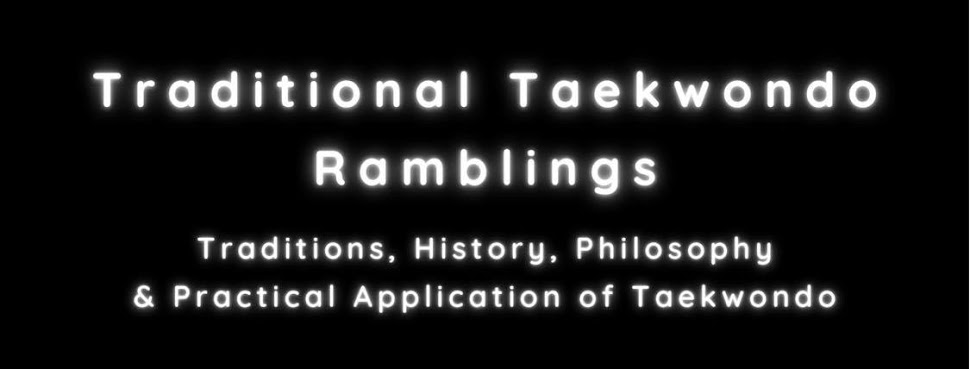 |
| Image Soruce: Sihak Henry Cho`s 1968 book |
"hard blocks". In mainstream Taekwondo today this is often the be all and end all of "Makki training". You do the Makki techniques in a hard way. Just like you would do any punch or kick. In the Kukkiwon Textbook these blocks (which constitutes most blocks for mainstream Taekwondo) is called Chyomakki. They are described as hard blocks where the ultimate goal is to block as hard as to hurt the attackers attacking limb. There are also other examples of this in older incarnation of Taekwondo where you would punch the instep of a front snap kick aimed at your groin. There is no real "defense", you go straight to offense. It is just that instead of attacking the center (the body or head) you start with the attacking limb and work your way inward towards the body and head. This strategy also entails deflecting an attack and counter attacking with your defending arm in the same movement.
If you look at the opening picture you will see an illustration of Sihak Henry Cho of Ji Do Kwan demonstrating this strategy in a brilliant way. In one movement he has deflected a high section punch and delivered his counter-attack. In one movement he does what many people have to do two movements to do. Modern Olympic sparring also employes this strategy relativly often, but obviously here we are talking about kicks and counter-kicks. Unfortunatly the strategy is not related back to hand techniques which would have have a lot more practical usefullness in my opinion (if you are reading this as a Taekwondo athlete please try to relate your counter kicks against kicks into hand techniques and attacks and see where it will lead you). Sihak Henry Cho calls this tactic "Punching Block" which I think is a brilliant, simple name for a brilliant simple tactic. As I said before this was a well known tactic in Taekwondo "in the old days" but is largely lost today (except as a modern Olympic sparring tactic with the kicks). The picture from Shihak Henry Cho`s 1968 book proves that this was in use in early Taekwondo. I say this now because the following examples of this strategy (the following tactics) are not from Taekwondo books but from Karate books instead. The strategy is so lost in modern Taekwondo that I could simply not find any "pure" Taekwondo examples, and getting people to take pictures with me will not be feasable for a week or two so the Karate examples allthough "stylized" and rigid they do get the point across:-) My friend Jon from Norway shared them with me. Thank you Jon :-)
The following illustrations are from the book pictured above:
This one is pretty much the same concepts as the punching block in Henry Cho`s 1968 book. You deflect by punching on the inside of the attackers punch.
This one is demonstrating the same tactic but done by punching on the outside of the attackers punch. Here I would step in even closer and try to use the front stance to lock his knee. The illustration is stylized but it does get the point across nicely :-)
Here the range is a lot better. Again the front stance lead foot should try to crash into the opponent. In this illustration the elbow is used.
The next demonstration of this strategy is from Dynamic Karate as pictured below:
Again we see the same principle in action as in the opening picture of Henry Cho. The defender launches his counter-attack on the inside of the opponents punch and in one move goes from a defensive mind set to and offensive one.
This is the other side of "Hard Blocks". Even the offensive techniques of Taekwondo can be defensive. Just as Yin (Um) and Yang each carry the seed of the other inside them, so too does our "offensive" and "defensive" techniques :-) Realizing this might shed some new light on certain puzling Poomsae sequences that seemingly does not make any sense. I hope that you can see the principles at play here, and try to take these into your training. See where it will lead you :-) Happy easter everyone :-)
I hope you enjoyed the post. The information on this blog is provided free of charge but I would like to ask you a "favour" or "donation". If you read this post and found it informative, please share it with others on facebook, twitter, or mention the blog to a friend that you think will like it. If you are on facebook consider looking up the blog there and give it a "Like" :-) Thank you for your support :-)
The Facebook page can be found on www.facebook.com/traditionaltaekwondoramblings
The Facebook page can be found on www.facebook.com/traditionaltaekwondoramblings







No comments:
Post a Comment